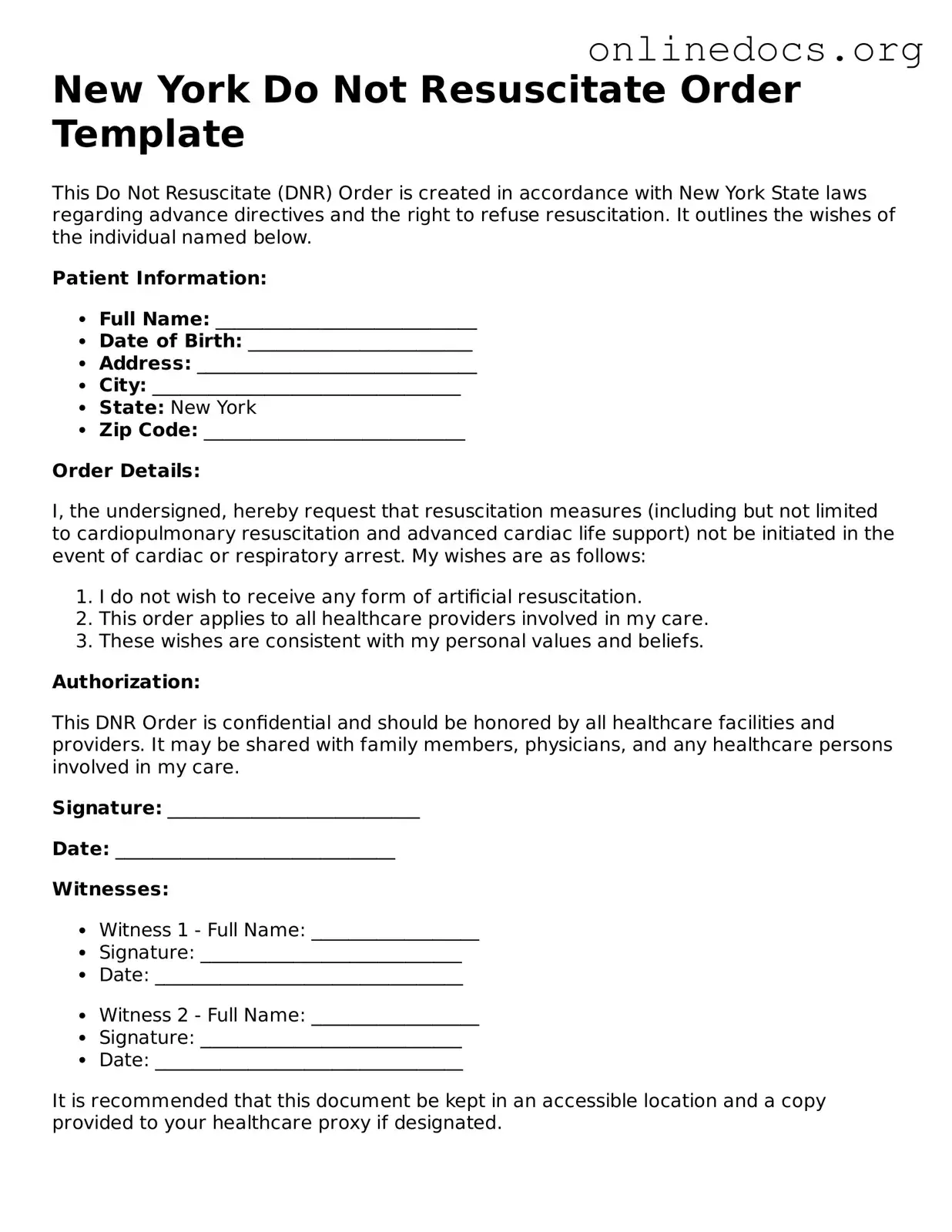The New York Do Not Resuscitate (DNR) Order form is similar to an Advance Directive. An Advance Directive allows individuals to express their wishes regarding medical treatment in the event they become unable to communicate. This document can include preferences about life-sustaining treatments, including resuscitation, making it a broader tool for end-of-life care decisions.
Another document akin to the DNR is the Physician Orders for Life-Sustaining Treatment (POLST) form. The POLST is designed for individuals with serious illnesses or those nearing the end of life. It provides specific medical orders regarding resuscitation and other life-sustaining treatments, ensuring that healthcare providers follow the patient’s wishes in emergency situations.
A Living Will is also comparable to the DNR Order. A Living Will outlines an individual’s preferences for medical treatment in situations where they cannot express their wishes. It typically addresses various scenarios, including the use of resuscitation, and guides healthcare providers in making decisions that align with the patient’s values and desires.
The Healthcare Proxy is another relevant document. This legal form allows a person to appoint someone else to make healthcare decisions on their behalf if they become incapacitated. While it does not specifically address resuscitation, it can include instructions about such interventions, making it a vital component of end-of-life planning.
In addition, the Do Not Intubate (DNI) order shares similarities with the DNR. A DNI order specifically instructs healthcare providers not to place a patient on a ventilator if they are unable to breathe on their own. While the DNR focuses on cardiac arrest situations, the DNI addresses respiratory failure, highlighting the patient’s preferences for life-sustaining interventions.
The Medical Power of Attorney is another document that functions similarly. This form allows individuals to designate someone to make medical decisions on their behalf. While it does not specifically address resuscitation, it empowers the appointed person to make choices consistent with the patient’s wishes, including decisions about DNR orders.
The California Operating Agreement form is essential for those looking to establish a strong foundation for their limited liability company. This document provides clarity on the management structure, roles, and responsibilities within the LLC, ensuring that all members understand their rights and obligations. By using the californiapdfforms.com/operating-agreement-form, prospective business owners can navigate the complexities of forming an LLC in California more effectively, thus safeguarding their personal assets and fortifying their operational strategies.
Lastly, the Comfort Care Order is comparable to the DNR form. This document emphasizes providing comfort and pain relief rather than aggressive medical interventions. It aligns with the philosophy of prioritizing quality of life over prolonging life through resuscitation efforts, making it an important consideration in end-of-life care.
